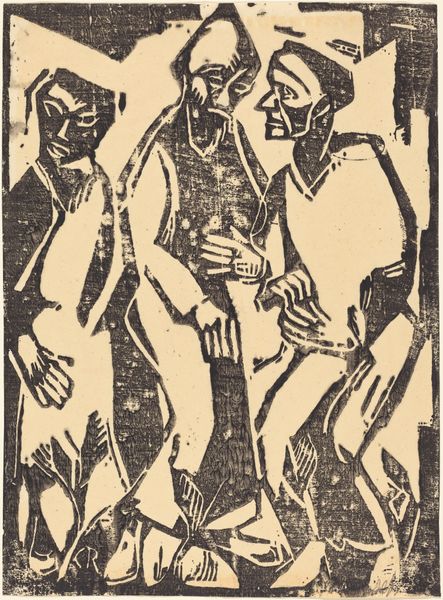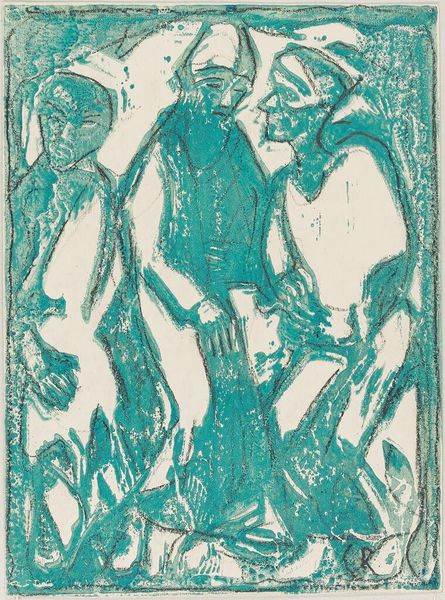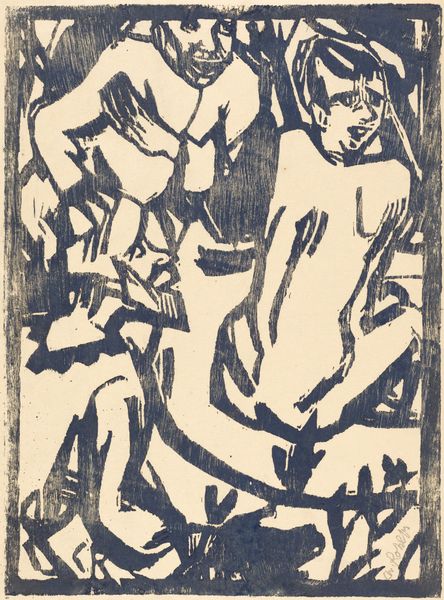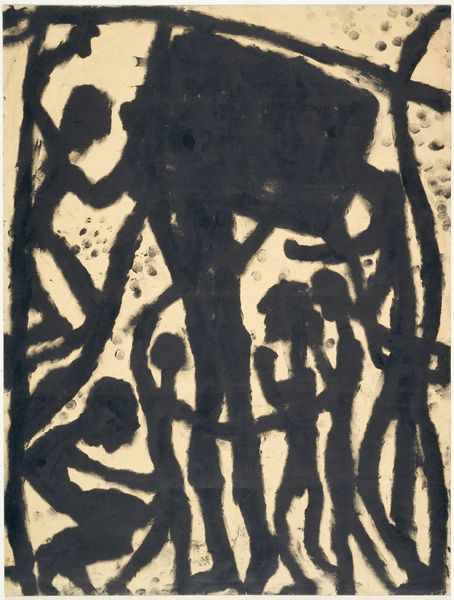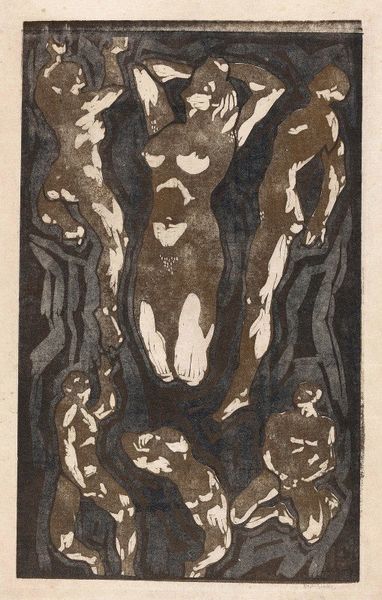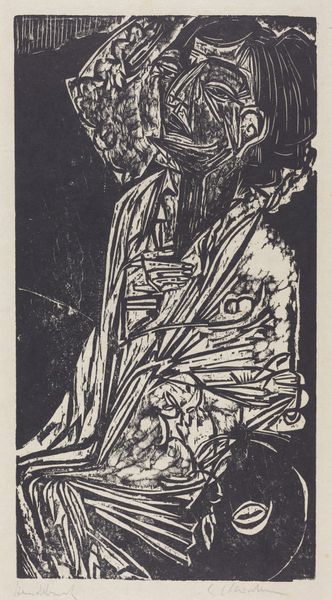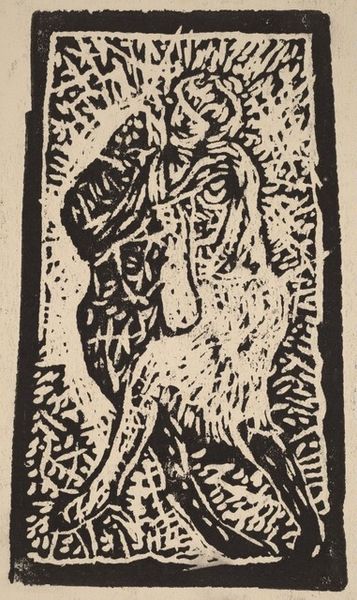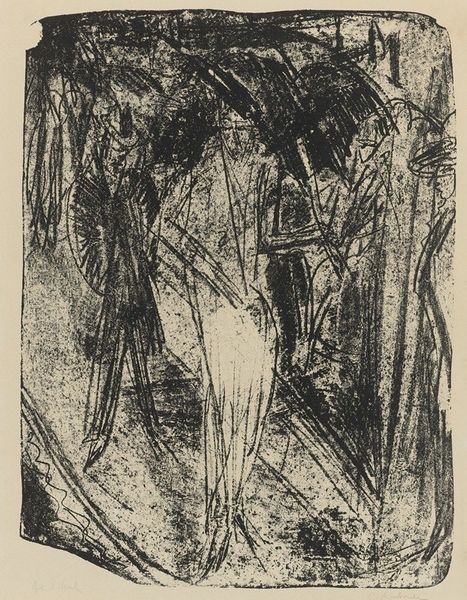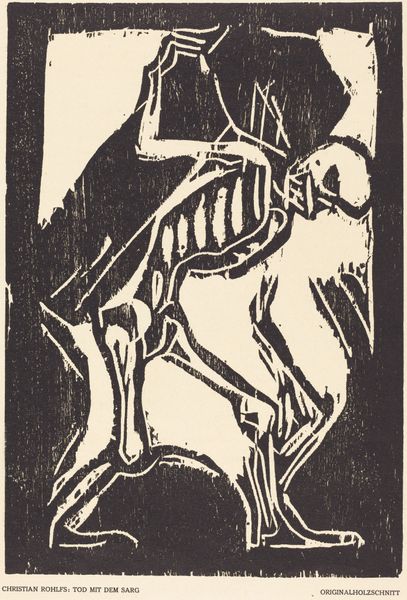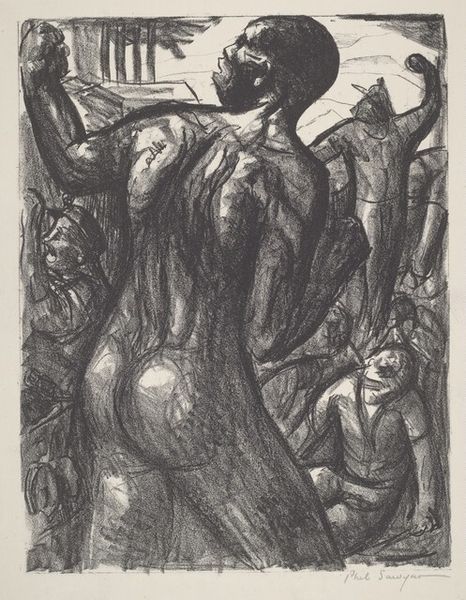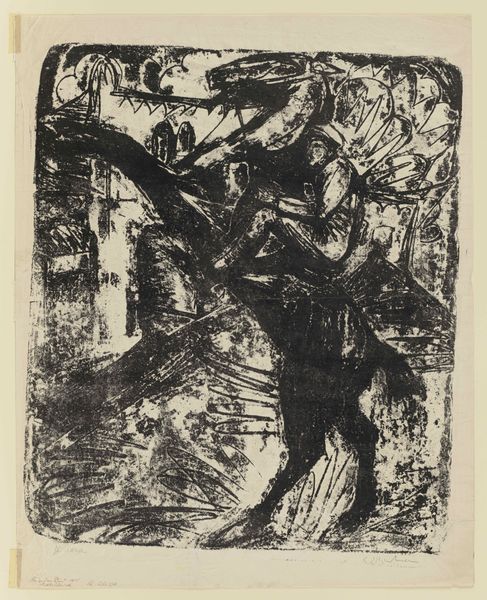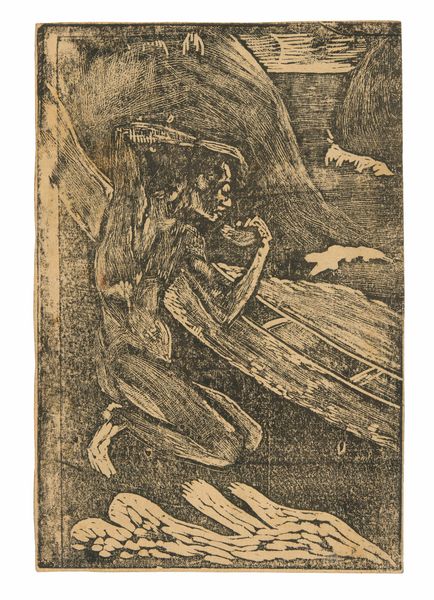
print, woodcut
#
narrative-art
# print
#
german-expressionism
#
figuration
#
expressionism
#
woodcut
Copyright: National Gallery of Art: CC0 1.0
Curator: Looking at Christian Rohlfs' 1913 woodcut, "Deliberation," one can't help but be struck by the starkness. The composition feels almost claustrophobic. Editor: Yes, it's incredibly tense. There’s a crowding of figures that lends to a mood thick with uncertainty, even anxiety. I'm immediately drawn to the body language—all hunched shoulders and angled heads, it feels confrontational yet somehow secretive. Curator: That’s Expressionism for you! It’s about more than observation; it's an attempt to express the inner turmoil of the human condition through intentionally jarring forms. Remember, 1913 was on the brink of World War I. The political climate in Germany was volatile. Editor: Absolutely. We can see that volatility reflected so viscerally here, can’t we? Note how Rohlfs uses the woodcut medium to emphasize the rough edges of the figures, the faces carved deep with lines that hint at inner struggle. It isn’t just an individual psychological state, it is a moment in society. Curator: Woodcut as a medium certainly lent itself well to that aesthetic. The deliberate crudeness—the visible marks of the tool—reflects the alienation and social unease that characterized German Expressionism. But the question arises, what exactly are these figures deliberating about? What larger socio-political conversations are reflected? Editor: Perhaps survival? Maybe this "deliberation" is about how to cope with the anxieties of their time. The figures' contorted faces could signify the fear of an unknown future, reflecting on the challenges of early 20th-century German society as it teetered on the edge of a massive shift in power dynamics. It’s about everyday people navigating systemic problems. Curator: It’s easy to see those fears and anxieties projected back through the historical lens of impending war. Yet Expressionism, at its core, always offered more questions than answers, leaving interpretation largely to the viewer. Editor: Right. Rohlfs doesn't provide any explicit clues; it allows this potent, emotional charge to resonate even today. This remains as a hauntingly effective reflection of collective unease. Curator: Indeed, it captures a sense of human experience in crisis and turmoil. Editor: Yes, an insightful visual encapsulation of its moment.
Comments
No comments
Be the first to comment and join the conversation on the ultimate creative platform.

